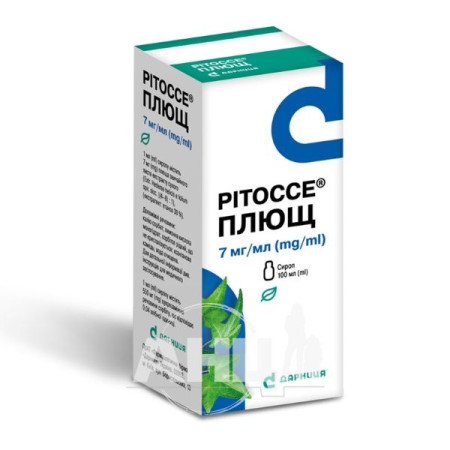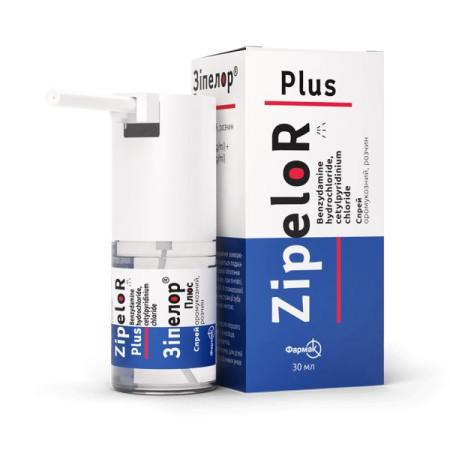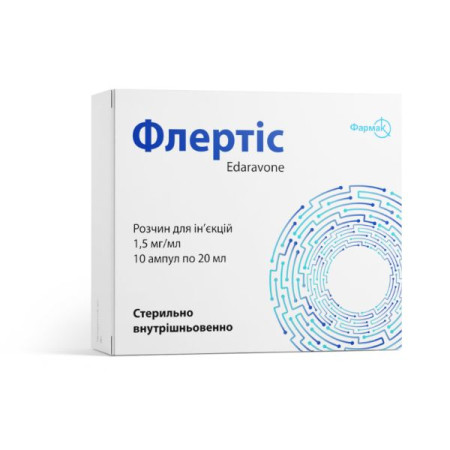Amizon max capsules 0.5 g No. 20

Instructions for Amizon max capsules 0.5 g No. 20
Composition
active ingredient: amison® (enisamium iodide);
1 capsule contains Amizon® (enisamium iodide) 0.5 g;
excipient: magnesium stearate;
gelatin capsule contains: gelatin, titanium dioxide (E 171), sunset yellow FCF (E 110).
Dosage form
Capsules.
Main physicochemical properties: hard gelatin capsules of cylindrical shape.
The body is white, the lid is orange.
The contents of the capsule are a crystalline powder of yellow or yellow-green color.
Pharmacotherapeutic group
Antiviral agents for systemic use. Direct-acting antiviral agents.
ATX code J05A X17.
Pharmacological properties
Mechanism of action
The antiviral effect of enisamium is associated with direct inhibition of RNA-dependent RNA polymerase of influenza virus and SARS-CoV-2.
Pharmacodynamics
Enisamium has antiviral activity against various strains of influenza A virus (H1N1, H3N2, H5N1, H7N9), influenza B virus, respiratory syncytial virus, as well as strains of alpha-coronavirus NL-63 and beta-coronavirus SARS-CoV-2 in vitro
Enisamium iodide has demonstrated efficacy against influenza A and B strains in in vitro studies using differentiated normal human bronchial epithelial cells (NHBE), human hepatocellular carcinoma (HepG2) cells, human rhabdomyosarcoma (RD) cells, and human colorectal adenocarcinoma (Caco-2) cells. In ferrets, a representative animal model for influenza research, enisamium iodide reduced the time of shedding of influenza virus from ferret nasal washes compared to a placebo control group.
Clinical efficacy
In a study in patients with acute respiratory viral infections, including influenza, treatment with enisamium iodide at a daily dose of 1500 mg (500 mg 3 times a day) provided positive dynamics of the disease, which was manifested by a more pronounced reduction in symptoms of viral infection compared to that with placebo (Table 1).
An early and statistically significant decrease in viral antigens in nasal swabs was found in patients receiving enisamium iodide compared with patients in the placebo group (Table 2).
Treatment with enisamium iodide resulted in increased serum interferon levels compared to the placebo group.
Table 1. Relief of symptoms of viral infection after treatment with enisamium iodide (number of patients / %)
| Era | Cough | Rhinitis | Weakness | Headache | ||||
| enisamium iodide | placebo | enisamium iodide | placebo | enisamium iodide | placebo | enisamium iodide | placebo | |
| 0 | 59 98.3% | 40 100% | 56 93.3% | 37 92.5% | 59 98.3% | 40 100% | 56 93.3% | 34 85% |
| 3 | 58 96.7% | 40 100% | 50 83.3% | 35 87.5% | 42 70% ** | 39 97.5% | 31 51.7% | 25 62.5% |
| 7 | 39 65% | 38 95% | 13 21.7% | 29 72.5% | 17 28.3% | 22 55% | 6 10% * | 13 32.5% |
| 14 | 4 6.7% | 22 55% | 0 | 2 5% | 1 1.7% | 7 17.5% | 0 | 3 7.5% |
Table 2. Dynamics of viral antigen determination (number of patients / %)
| Era | Viral antigens | Influenza virus antigens | ||
| enisamium iodide | placebo | enisamium iodide | placebo | |
| 0 | 60 (100%) | 40 (100%) | 33 (66%) | 22 (55%) |
| 3 | 17 (28.3%) | 29 (72.5%) | 8 (13%) | 16 (40%) |
| 7 | 1 (1.7%) | 6 (15%) | 1 (1.7%) | 1 (2.5%) |
Results of a phase III clinical trial showed that enisamium iodide was well tolerated and clinically effective, as demonstrated by:
a reduction in the duration of the period of elevated temperature by 1.1 days; a reduction in the duration of catarrhal and constitutional symptoms; a reduction in the use of expectorants and vasoconstrictors; a reduction in the number of days of incapacity for work; a reduction in the period of virus excretion and a significant reduction in the number of patients in whom viral antigens were detected, compared to the group of patients receiving placebo.
Greater efficacy of enisamium was observed when treatment was started earlier.
Patients included in the placebo group received 1 placebo capsule orally every 6 hours, 4 times a day. Patients taking Amizon® Max received 1 capsule of the drug Amizon® Max every 6 hours, 4 times a day. The treatment lasted a full 7 days (168 hours).
Table 3. Modified WHO Patient Severity Scale
| Mark | Patient's condition |
| 1 | Death |
| 2 | Hospitalized, requiring mechanical ventilation (MV) or extracorporeal membrane oxygenation |
| 3 | Hospitalized, requiring non-invasive ventilation or high-flow oxygen therapy |
| 4 | Hospitalized, requires supplemental oxygen therapy |
| 5 | Hospitalized, not requiring supplemental oxygen therapy, but requiring ongoing medical care (COVID-19 related or other) |
| 6 | Hospitalized, does not require supplemental oxygen therapy, and no longer requires ongoing medical care |
| 7 | Not hospitalized, but has activity limitations and/or requires oxygen support at home |
| 8 | Not hospitalized, no restrictions on activities |
The results of the study demonstrated that therapy with the drug Amizon® Max significantly (p = 0.00945) accelerates the onset of improvement in the condition of a COVID-19 patient by 2 points on the above-mentioned modified WHO scale compared to the group of patients receiving placebo. The predominant effectiveness of combination therapy with the drug Amizon® Max in the treatment of patients with COVID-19 is also confirmed by the results of secondary efficacy endpoints, namely:
on the 15th day of the study, 85.7% of patients in the placebo group were discharged, and 94.4% of patients in the Amizon® Max group. The difference in proportions was 8.6%, and these differences were statistically significant (p = 0.018), which indicates the superior effectiveness of the Amizon® Max drug compared to placebo; a faster and more significant decrease in cough severity was observed in the Amizon® Max drug group compared to the placebo group on the 3rd, 4th and 5th days of treatment (p = 0.009; 0.018 and 0.007, respectively); the use of the Amizon® Max drug in the complex therapy of COVID-19 allows to reliably (p = 0.016) prevent the deterioration of the patient's condition and the increase in respiratory failure during the treatment process. Thus, the proportion of patients whose condition deteriorated by 1 point on the modified WHO scale was 8.4% in the placebo group and 2.1% in the Amizon® Max group, the differences between the groups were significant (p = 0.016). Analysis of the time to the moment of deterioration of the patient's condition by 1 point using the Kaplan-Meier method and using the log-rank criterion for comparing groups showed greater effectiveness of the Amizon® Max drug compared to placebo (p = 0.009) in preventing deterioration of the patient's condition, the development of more severe respiratory failure and the development of complications; In the group of patients who received Amizon® Max as part of complex therapy, there were no deaths and all patients recovered within 21 days, while in the placebo group there were three (3) deaths and one patient did not reach the primary endpoint during the study period, which is a strong argument in favor of the use of Amizon® Max in complex therapy for COVID-19.
Pharmacokinetics
Absorption
Enisamium iodide is rapidly absorbed: peak plasma concentrations are reached 1.6–2.4 hours after a single dose. Absolute bioavailability in humans has not been studied, while relative bioavailability is less than 5%. Steady state is reached after 3 days of oral administration of 500 mg three times a day and 1000 mg twice a day. No accumulation of the drug has been observed.
A study in dogs showed that 35% of the administered dose of enisamium iodide was absorbed from the gastrointestinal tract after oral administration. Absorption in rodents was less than 5%.
Food significantly reduced the bioavailability of enisamium iodide. The mean Cmax and AUCinf values for 1500 mg administered after food were reduced by 46.8% and 26.6%, respectively, compared to those for 1500 mg administered in the fasted state. The mean tmax was delayed by 0.75 hours in the fasted state and 2.75 hours in the fed state.
Distribution
The degree of binding of enisamium iodide to serum proteins in humans is low.
Biotransformation
The parent compound (enisamium iodide) is partially converted in humans by hydroxylation and glucuronic acid conjugation (less than 5%). CYP 2D6 probably plays a minor role in the metabolism of enisamium iodide. Other cytochrome P450 enzymes studied do not have a significant effect on the metabolic transformation of the parent compound.
Elimination
Enisamium iodide is mainly excreted unchanged in the urine. After oral administration of radiolabeled enisamium iodide to dogs, excretion in the feces was 32–35%. The median half-life of single doses of enisamium iodide ranges from 2.69 to 3.35 hours and from 6.00 to 7.34 hours after multiple administration over 10 days.
Pharmacokinetics in specific patient groups
Elderly patients
Pharmacokinetic studies in elderly patients have not been conducted.
The pharmacokinetics of enisamium iodide in special populations have not been studied. However, based on the results of pharmacokinetic studies, given the presence of renal and enteral routes of excretion, as well as the low level of metabolism of enisamium iodide, in subjects with organic liver and kidney damage, no significant accumulation of enisamium in plasma should be expected during short-term use (up to 7 days) of this drug. Thus, a deterioration in the safety profile in patients with the above-mentioned organic diseases is unlikely.
Indication
Treatment of influenza and SARS.
Treatment of moderate COVID-19 in combination with basic therapy.
Contraindication
Hypersensitivity to drugs containing iodide, molecular iodine or covalently bound iodine, as well as to other components of the drug.
Interaction with other medicinal products and other types of interactions
Enisamium iodide may reduce the uptake of radioactive iodine isotopes by the thyroid gland for up to 6 weeks.
The simultaneous use of iodine-containing drugs, as well as contrast agents and drugs containing covalently bound iodine, should be avoided; treatment of large wounds with iodine-containing antiseptics (e.g., molecular iodine) due to a possible increased risk of thyroid dysfunction.
Application features
Enisamium iodide intake leads to an increase in plasma iodide levels. The secondary increase in circulating iodide levels triggers a self-regulation mechanism of thyroid function, in which the uptake of inorganic iodide by thyrocytes is inhibited, which helps prevent excessive production of thyroid hormones; at the same time, the level of thyroid-stimulating hormone increases transiently (Wolf-Chaikoff phenomenon). This effect lasts for several days; after discontinuation of treatment, thyroid function returns to normal. In some cases, a transient increase in thyroid-stimulating hormone has been observed for several weeks.
There is no information on the effects of enisamium iodide on patients with thyroid dysfunction or patients with pre-existing hypothyroidism. However, it is advisable to monitor thyroid function during treatment with enisamium iodide.
Other iodine-containing drugs are not recommended for use during treatment and for 7 days after the end of treatment with enisamium iodide.
Excipients
The medicine contains yellow FCF (E 110), which may cause allergic reactions.
Use during pregnancy or breastfeeding
The drug is contraindicated for use during pregnancy, as clinical studies of enisamium iodide in pregnant women have not been conducted. Animal studies do not indicate direct or indirect effects on reproductive function/fertility.
Breast-feeding
It is not known whether enisamium iodide or its metabolites are excreted in human milk. A risk to the newborn/infant from enisamium iodide cannot be excluded.
Ability to influence reaction speed when driving vehicles or other mechanisms
Taking Amizon® Max does not affect the ability to drive or operate other mechanisms.
Method of administration and doses
Amizon® Max should be taken orally, without chewing, 2 hours before meals.
Adults are prescribed a dose of 500 mg (0.5 g) 3 times or 1000 mg (1 g) 2 times a day.
For patients with COVID-19, enisamium iodide is prescribed in combination with basic therapy at a dose of 500 mg (0.5 g) 4 times a day.
The maximum single dose is 1000 mg (1 g), daily dose is 2000 mg (2 g).
Duration of treatment is 7 days.
Children. The drug in this dosage form should not be used in children.
Overdose
No reports of overdose with Amizon® Max were received in clinical trials and during post-marketing use.
There is no specific antidote.
Side effects
The most common adverse reactions (ADRs) were taste disturbance, folliculitis, nasopharyngitis, headache, and lymphadenopathy (in placebo-controlled phase I studies). Most of these ADRs were reported as single events and resolved spontaneously. In most patients, these ADRs did not lead to discontinuation of enisamium iodide.
In a placebo-controlled phase III study, mild gastrointestinal disturbances (bitter taste in the mouth), heartburn, and burning in the throat were reported.
Only adverse events that were more common in the enisamium iodide group compared to the placebo group and that were reported by more than two individuals were considered.
Table 4 lists the adverse reactions observed during clinical trials and post-marketing use of the drug. The frequency is defined as follows: very common (≥ 1/10), common (≥ 1/100, < 1/10), uncommon (> 1/1000, < 1/100) and unknown (cannot be estimated from the available data).
Table 4
| Organ system class | Very often | Often | Infrequently | Frequency unknown* |
| Research | Elevated levels of thyroid-stimulating hormone in the blood | Increased blood pressure | General disorders | Fatigue |
| Infections and infestations | Folliculitis Nasopharyngitis Rhinitis | |||
| Respiratory, thoracic and mediastinal disorders | Dyspnea | |||
| Blood and lymphatic system disorders | Lymphadenopathy | |||
| Nervous system disorders | Headache | Dizziness | ||
| Visual impairment | Eyelid swelling | |||
| Musculoskeletal and connective tissue disorders | Arthralgia | |||
| Skin and subcutaneous tissue disorders | Erythema Facial swelling Facial itching Edema Itch Rash Papular rash Urticaria | |||
| Gastrointestinal disorders | Diarrhea Dry mouth Taste disorders Dyspepsia Nausea Vomiting | Abdominal pain |
*Post-registration notifications.
Reporting of suspected adverse reactions
Reporting suspected adverse reactions after a medicinal product has been authorised is essential. This ensures continuous monitoring of the benefit/risk balance of the medicinal product. Healthcare professionals are asked to report all suspected adverse reactions via the national reporting system.
Expiration date
4 years. Do not use the drug after the expiration date indicated on the package.
Storage conditions
Store in a dry place, protected from light, at a temperature not exceeding 25 ° C. Keep out of the reach of children.
Packaging
10 capsules in a blister. 1 or 2 blisters in a pack.
Vacation category
Without a prescription.
Producer
JSC "Farmak".
Location of the manufacturer and its business address.
Ukraine, 04080, Kyiv, Kyrylivska St., 74.
There are no reviews for this product.
There are no reviews for this product, be the first to leave your review.
No questions about this product, be the first and ask your question.










